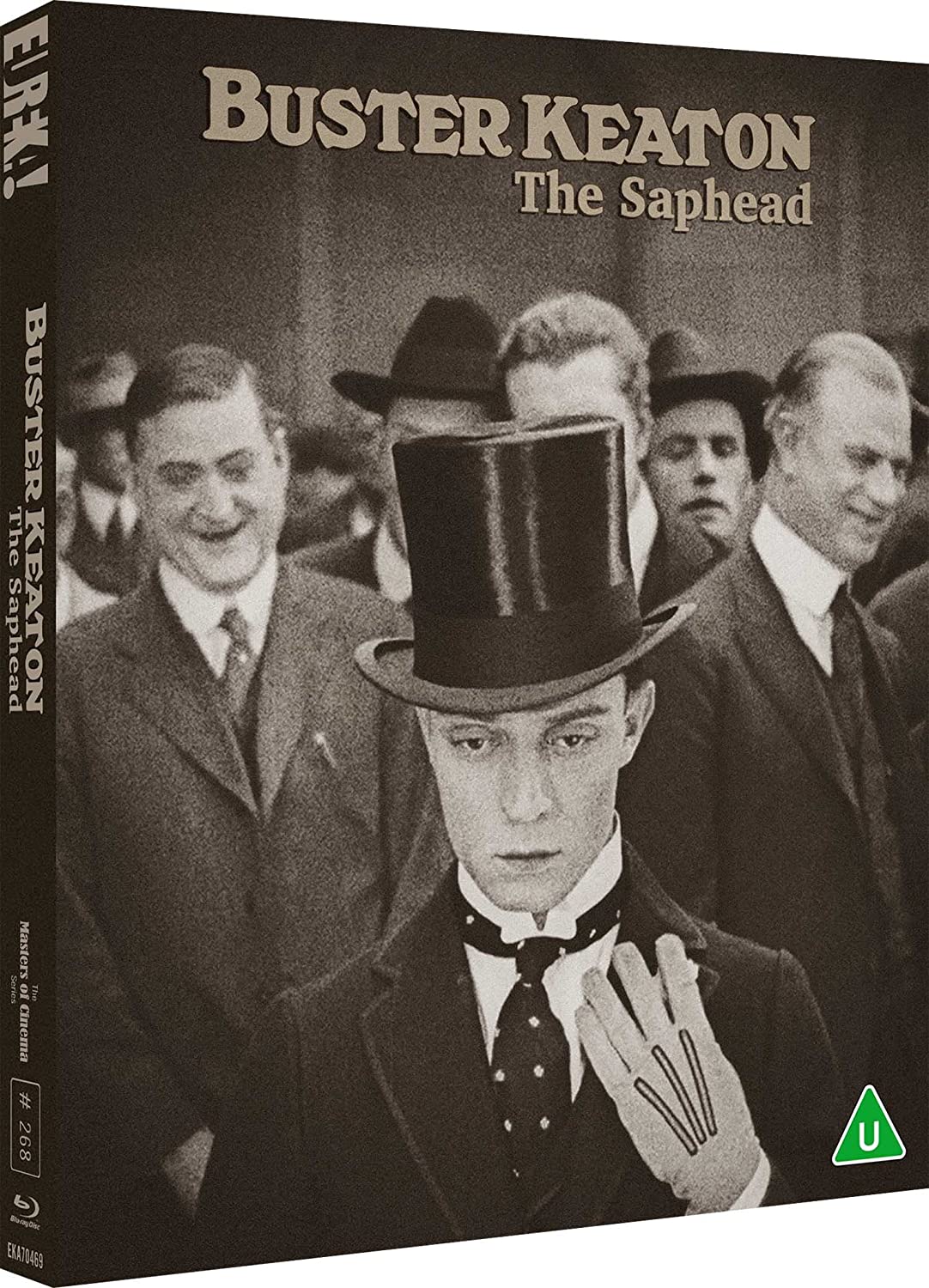Buster Keaton made his name in a series of two-reel shorts made from 1917 onwards; The Saphead, from 1920, was his first starring role in a feature film.
It’s in no way comparable to the classics which Keaton produced and directed in his mid-1920s purple patch, the wordy screenplay cobbled together from a pair of popular stage plays and the film directed in workmanlike fashion by Herbert Blaché, who wasn’t familiar with Keaton. Douglas Fairbanks was originally slated to star, recommending his younger colleague for the part of Bertie Van Alstyne when he found himself unavailable.
 That Keaton had very little creative input soon becomes clear; for the most part, The Saphead is a stodgy, over-complicated farce which only becomes diverting when he’s on screen. Keaton’s Bertie is a foppish innocent, an indulged manchild who shows no interest in following his father Nicholas (William H Crane), “the richest man in New York”, to Wall Street. The plot centres on Bertie’s villainous brother-in-law Mark (Irving Cummings) and his efforts to cheat Nicholas out of the family fortune.
That Keaton had very little creative input soon becomes clear; for the most part, The Saphead is a stodgy, over-complicated farce which only becomes diverting when he’s on screen. Keaton’s Bertie is a foppish innocent, an indulged manchild who shows no interest in following his father Nicholas (William H Crane), “the richest man in New York”, to Wall Street. The plot centres on Bertie’s villainous brother-in-law Mark (Irving Cummings) and his efforts to cheat Nicholas out of the family fortune.
Keaton is as otherworldly as ever; we first see him picking at an afternoon breakfast like a pampered pet, waited upon by a pair of fawning servants. Bertie attempts to impress his adopted sister Agnes (Beulah Booker) by behaving like a sophisticated man about town, one sequence seeing him failing to get arrested after a night of illegal gambling. A marriage ceremony doesn’t go to plan, and Bertie eventually pitches up on the floor of the Stock Exchange, mocked and manhandled by other traders before inadvertently saving the family fortune. Despite the multiple locations, The Saphead feels stagey and claustrophobic, fun though it is to see ticker tape machines clattering away behind the cigar smoke in the office scenes.
Keaton’s self-directed films are remarkable for their lack of dialogue cards; they’re simply not needed, whereas reading through the text in The Saphead can be like wading through treacle. Worth seeing, then, but essentially one for completists. Still, it looks immaculate in this Masters of Cinema restoration, taken from a first-generation nitrate print. Andrew Earle Simpson’s occasionally spiky score is effective. Eureka’s generous bonus features make the set worth acquiring. They include a second version of the film comprised of different takes and camera angles, a comparative featurette explaining that studios often produced alternative cuts of film for international markets. Audio-only interviews with the elderly Keaton are fascinating, but the main draw is a chance to see the great man's final screen appearance in The Scribe, a 1966 Canadian short intended to teach construction workers about building site safety. Though he looks frail, Keaton’s comic chops are very much intact, the sight gags involving lifts, dropped bricks and feet getting stuck in buckets still funny.















Add comment